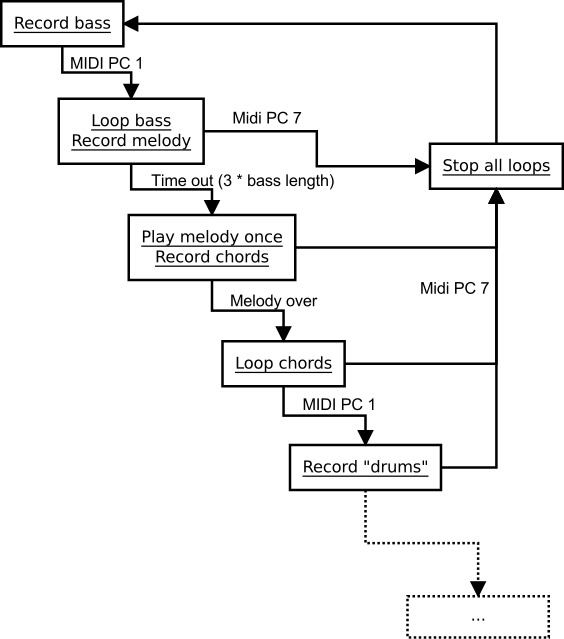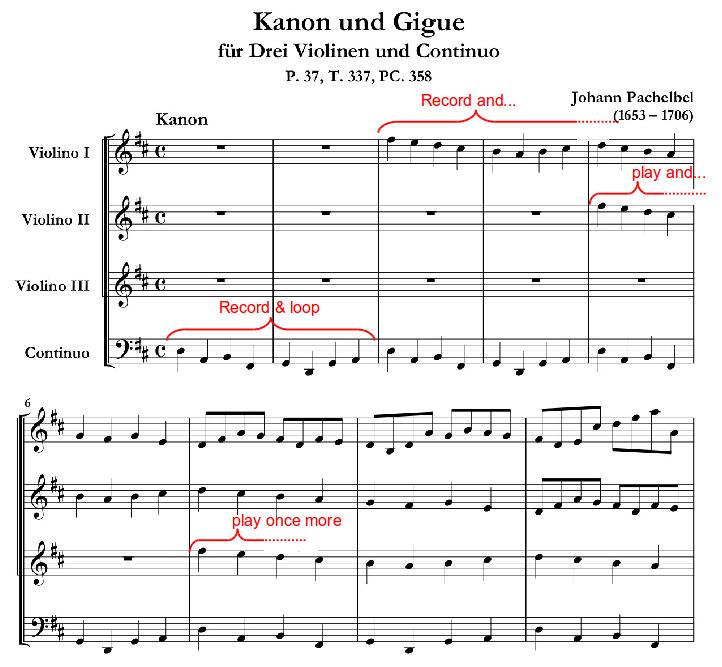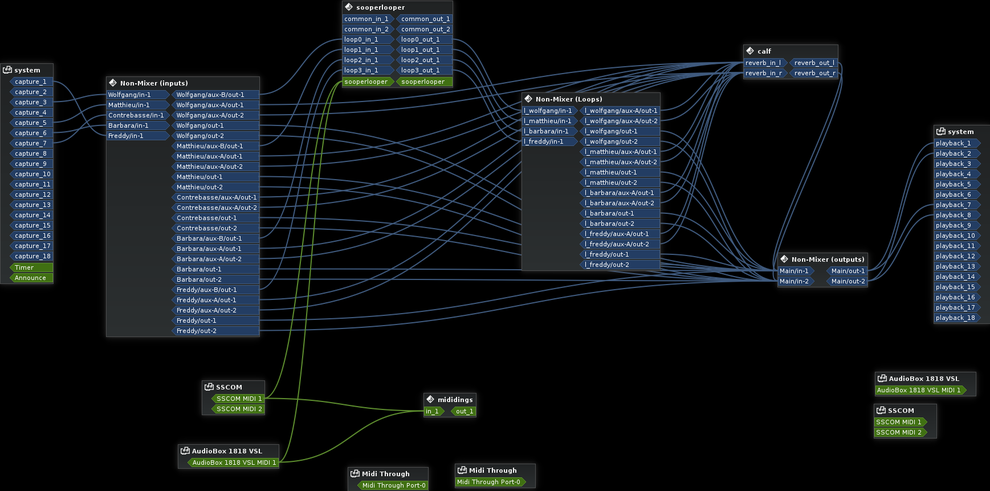Guidelines
Using Linux on stage is like exploring an unknown territory: thrilling, slightly dangerous and very time-consuming.
In order not to get lost, we try to keep in mind a few basic principles.

-
Music First!
We want to avoid getting carried away by the technical possibilities and playing pieces "because it's possible".
That's why we always think of a musical idea first, and then think about how it can be done (if at all).
-
Forget the technique
We're making concerts, not technical demos. The technique should be as transparent as possible.
Even if it was a lot of work, we want the audience to concentrate on the music, not on the technical difficulties (be it intrumental technique or "technical technique").
-
Extend the instruments
Our technical setups aim to extend the possibilities of "traditional" instruments. As such, they must be stable, easy to use, and generally speaking add as little cognitive overload as possible during the performance.
Note All examples below are based on a Linux system with jack, although we only mention the additional software used.




